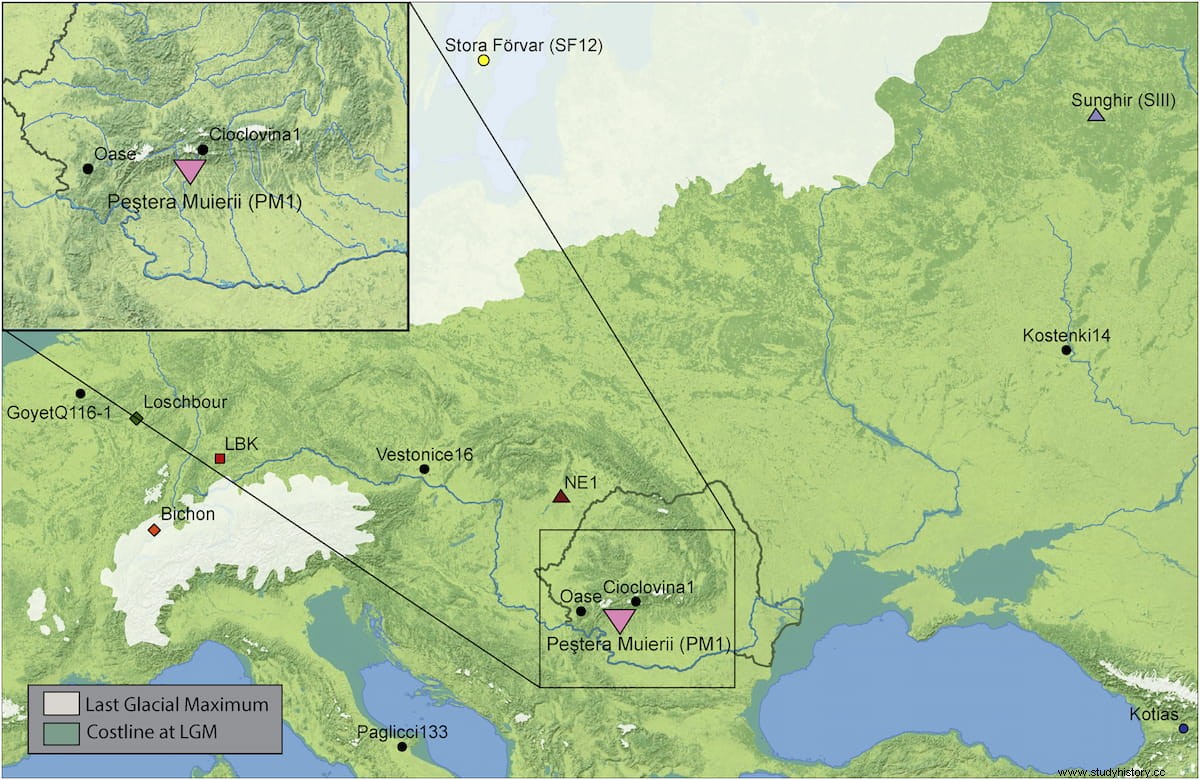For the first time, researchers have managed to sequence the complete genome of the skull of Peştera Muierii 1, a woman who lived 35,000 years ago and whose remains were found in the cave of the same name (or Cueva de Muierilor) in Baia de Fier, in the southern Romania.
Her high genetic diversity demonstrates that migration out of Africa was not the great bottleneck in human development, but that it occurred during and after the last Ice Age. This is the conclusion of a new study led by Mattias Jakobsson at Uppsala University and published in Current Biology .
It looks a little more like present-day Europeans than it does individuals in Europe 5,000 years earlier, but the difference is much smaller than we had thought. We see that it is not a direct ancestor of modern Europeans, but it is an ancestor of the hunter-gatherers who lived in Europe until the end of the last Ice Age , says Mattias Jakobsson, professor at the Department of Biology at Uppsala University and responsible for the study.

Very few complete genomes older than 30,000 years have been sequenced. Now that the research team can read the entire genome of Peştera Muierii 1, they can see the similarities with modern humans from Europe and, at the same time, verify that she is not a direct ancestor. In earlier studies, other researchers noted that the shape of her skull bears similarities to both modern humans and Neanderthals.
Therefore, they assumed that she had a higher fraction of Neanderthal ancestry than other contemporaries, which made her stand out from the norm. But genetic analysis in the current study shows that she has the same low level of Neanderthal DNA as most individuals living in her time. Compared to the remains of some individuals who lived 5,000 years earlier, such as Peştera Oase 1, it was only half Neanderthal in ancestry.
The expansion of modern humans out of Africa around 80,000 years ago is an important period in human history and is often described as a genetic bottleneck . The populations left Africa and went to Asia and Europe. The effects of these migrations can be seen even today. Genetic diversity is lower in non-African populations than in African ones. The fact that Peştera Muierii 1 has high genetic diversity implies that the greatest loss of genetic diversity occurred during the last Ice Age (which ended about 10,000 years ago) and not during the out-of-Africa migration.

This is exciting as it teaches us more about the early population history of Europe. Peştera Muierii 1 shows much higher genetic diversity than expected for Europe at this time. This shows that genetic variation outside of Africa was considerable until the last Ice Age, and that the Ice Age caused diversity to decline in humans outside of Africa .
The researchers were also able to follow genetic variation in Europe over the past 35,000 years and see a clear decline in variation during the last Ice Age. Reduced genetic diversity has previously been linked to pathogenic variants in genomes being more common among populations outside of Africa, but this is disputed.
Access to advanced medical genomics has allowed us to study these ancient remains and even be able to search for genetic diseases. To our surprise, we found no difference over the last 35,000 years, although some individuals alive during the Ice Age had low genetic diversity.
We've now accessed everything possible from these remains. Peştera Muierii 1 is important from a cultural history point of view and will no doubt continue to be of interest to researchers in other areas, but from a genetic point of view all the data is now available .
